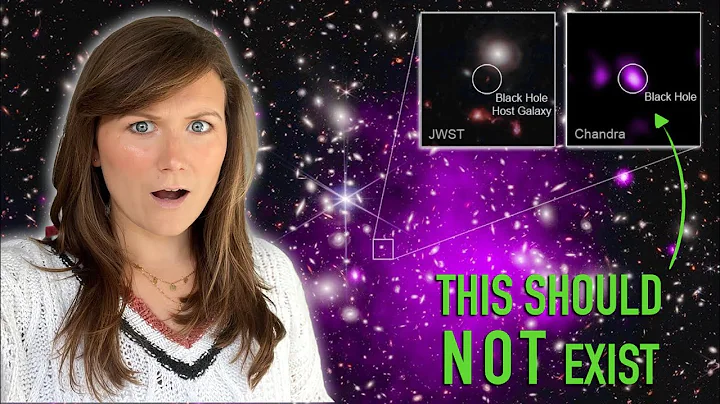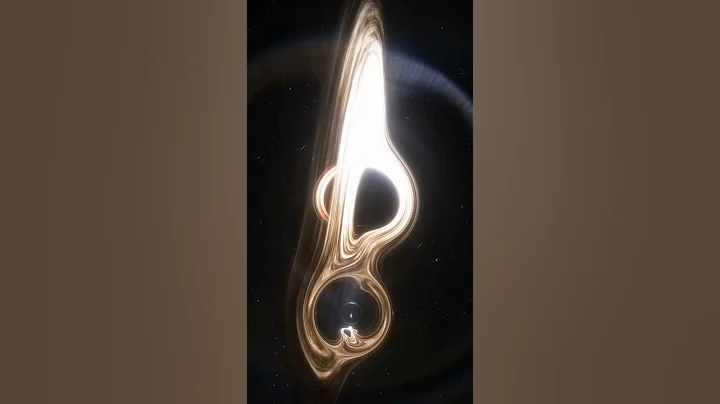Tracing the Prehistory of the Universe - Black Holes
NASA's James Webb Space Telescope may be able to detect these faint signals.

A supermassive black hole releases a jet of high-energy particles . (Image credit: NASA/California Institute of Technology/Jet Propulsion Laboratory)
Paul M. Sutter is a researcher at SUNY Stony Brook, and Flatiron Research Astrophysicist at the Institute, host of Ask a Spaceman and Space Radio, and author of How to Die in Space. Sutter contributed this article to Space.com's Expert Voices: Viewpoints & Insights.
The largest black hole in the universe formed at an alarming rate, when the universe was less than a billion years old. It can be traced back to the earliest time that these black holes were not theoretically formed by the death of massive stars, but originated from the first seconds of the Big Bang.
To test this possibility, a team of astrophysicists proposed a futuristic idea: The composition of matter around giant black holes happens to be slightly different from the average of the universe, while retaining residual memories of the young universe.
We are selling magic metal windmills in stock at cheap prices.

Rock solid
As the name suggests, supermassive black holes (SMBHs) are huge, with the smallest black holes millions of times more massive than the Sun, while the largest - at the centers of giant galaxies - can weigh as much as the Sun Hundreds of billions of times. Finding such massive black holes in the modern universe isn't all that surprising, since these black holes have been around for billions of years, feeding on gas and dust (as well as other black holes).
But recently, astronomers have begun to discover supermassive black holes in the early universe. More than 200 supermassive black holes have existed for a billion years, and one supermassive black hole was formed 700 million years earlier.

This means they form quickly, too quickly. We understand how black holes form in our current era. When a giant star dies, it leaves behind a black hole with a mass dozens of times that of the sun. This black hole feeds on the material around it, finds and merges with other black holes, and if it's lucky, it eventually achieves a supermassive state.
The problem is that these processes take time. When the universe was less than a billion years old, the first stars and galaxies were just beginning to form. Creating a supermassive black hole in a very short time stretches the limits of known astrophysics processes.

A primitive origin
So perhaps the supermassive black holes in the universe do not originate from normal astrophysical processes, such as the death of stars and the continued consumption of gas. Perhaps these giant black holes originated from the important moments in the early days of , the Big Bang of .
The early universe was an extreme place. Density and pressure are high enough to fuse the fundamental forces of nature into a unified field. For the first few seconds, it's even too hot for protons and neutrons to solidify before being torn apart. In those turbulent
times, extreme density contrasts could appear spontaneously. And where there are extreme density contrasts—a lot of mass packed into a very small volume—black holes can form.

These are so-called primordial black holes, thought to have likely formed through bizarre interactions in the Big Bang. Astronomers have spent decades looking for them, especially through detectors like the cosmic microwave background, the light left behind by the universe 380,000 years ago. All of these searches came up empty, ruling out nearly all models of primordial black hole formation.
The key word here is "almost". There is a type of primordial black hole that may be observed. A black hole with a mass of about solar mass .1 million was formed in the first second after the big bang. These black holes will quickly consume any matter around them, devouring themselves until they become the super black holes observed in the early universe.
But how do we distinguish Astrophysics Black holes from primordial giant black holes?
Universe: 10 simple steps from the Big Bang to the present
Interesting science
A team of astrophysicists published a paper on the preprint server arXiv 's paper suggests that the answer is to stare very, very hard at the black hole.

The key point is that primordial black holes are not just in the infancy of the universe, independent of the outside world; their interactions with the surrounding environment affect the surrounding universe. We were able to rule out many models because they would significantly disrupt the hot plasma of the Big Bang, biasing our observations.
Ironically, a primordial black hole with a mass of 100,000 suns would have a much more subtle effect. Their numbers were not large enough to seriously disrupt the physical structure of the early universe, so they have remained undiscovered. Just minutes after their formation, an important epoch arrived: the age of nucleosynthesis, when the first light elements were also created from the intense heat of the Big Bang.

Primordial black holes may fill the universe. Will it hit the earth?
Physicists know this era very well, because it follows the same physical laws as nuclear reactors and atomic bombs . A primordial black hole would not completely disrupt this process, and the amount of hydrogen and helium in the universe would remain essentially the same, but it would affect the surrounding environment. Due to the black hole's extreme gravity, nuclear processes change near the black hole, slightly altering the mixing of elements.
If the gas around these black holes retains a memory of that era, then the composition of the matter we observe around supermassive black holes will be different from the cosmic average. For example, the authors of the new paper found that primordial black holes could increase the amount of helium by about 10% and reduce the amount of lithium by about 10%.

The authors acknowledge that observing such natural differences can be challenging, but stress that instruments like NASA's upcoming James Webb Space Telescope may be up to the task. . Observing this elemental map could not only reveal the origin of the supermassive black hole itself, but also give astronomers an important window into the initial evolution of the Big Bang.
BY: Paul Sutter
FY:Jane
If there is any infringement of relevant content, please contact the author after the work is published to delete it.
Please also obtain authorization for reprinting, and pay attention to maintaining integrity and indicating the source





















